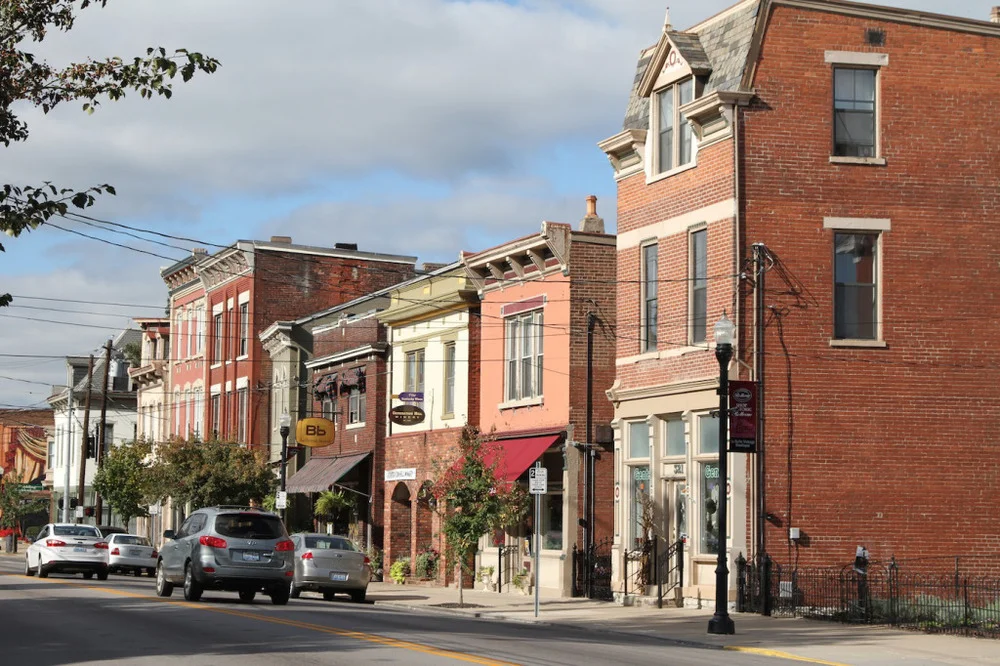"What’s the Most Exciting City for Cycling Nerds? New York? Minneapolis? How About Edmonton?"
This feature profile highlights the work being done in Edmonton, one of the four finalists in the 2024 Strongest Town Contest. Cast your vote to determine the winner, or learn more about the contest, here.
Bike lanes in downtown Edmonton, AB.
In 2015, Edmonton, a city of 1 million situated in the Canadian Prairies of Alberta, was the first city in the country to adopt Vision Zero. That year, the city lost 35 lives to traffic violence, a jump from years prior, and concluded that there was no reason to accept this death toll as inevitable.
Nearly a decade later, Edmonton has upgraded nearly 400 crossings, which are credited with decreasing traffic-related fatalities by 50% and serious injuries by around 30%. Showing no signs of slowing down, the city is planning to tackle 400 more intersections in the next four years and simultaneously fertilize a program through which community members can pioneer bottom-up traffic safety projects that tackle the problem head on, without triggering the bureaucratic pace of a full-scale redesign.
“So, if you’re an urban cycling nerd, and I was to ask you what the most exciting city in North America is right now, what would you say?” an urban cycling YouTube channel host asked in 2023. “New York? Minneapolis? Montreal? How about Edmonton?”
The question is cheeky only because Edmonton’s reputation as a cycling-safe city, not to mention a destination for those who like to move about on two wheels, is relatively new. Their adoption of Vision Zero—and perhaps, more importantly, taking that adoption seriously—is a part of it. But making Edmonton a safe and attractive place for people to get around outside of their cars takes more than redesigning an intersection.
In 2020, the city passed a package of reforms that both eliminated single-family zoning and costly parking mandates that for decades trapped the city in a pattern of expansion that was not only financially fragile, but made it arguably a more dangerous place to navigate in and outside of the car.
Ashley Salvador, an urban planner at the time of the reforms, described Edmonton as a “classic prairie city,” and said that its lack of geographic boundaries has led to a low-density, auto-centric development pattern. In ending single-family zoning, Edmonton is hoping to reverse course. The city pledged 50% of all development be infill—developing unused and underutilized land within existing development patterns—and most importantly, simplified the permitting process for smaller-scale developers. Lengthy and bureaucratic permitting is a frequent barrier to more modest projects like infill, missing-middle housing, and broader affordability. The city isn’t looking for a wholesale transformation overnight, it just wants to set itself up for adaptation.
(Click to enlarge.)
Endeavoring that infill development is easier when developers are able to tailor parking to their needs, rather than follow blanket requirements. In Edmonton, like many cities in North America, the number of parking spots required by the city was based on the square footage of the property, without taking into consideration proximity to transit and whether future residents or patrons would even own a vehicle. In some places, this ratio is complicated by additional formulas that land-use experts rightly condemn as pseudoscience.
Ensuring parking may seem like a sensible way to accommodate those who drive, but in reality the mandates compel cities to cede a large portion of their land to asphalt, preventing other types of land uses like restaurants, coffeeshops, and even parks. In fact, lifting parking mandates proved to be especially useful as the pandemic set in. It gave businesses like Campio Brewing Company the flexibility to convert an underutilized 26-stall parking lot into an outdoor beer garden, which remains operational and popular four years later.
Salvador hopes that, alongside a focused Vision Zero strategy, the combined land-use reforms will “inject more folks, more families, greater population into these communities [and] have significant impacts on the vibrancy and physical viability” of older city neighborhoods, many of which have lost population over the long term. In doing so, new generations will have more housing options that fit their budgets and lifestyles and seniors will have the opportunity to age in place. She’s also hopeful to see car ownership evolve into an option, rather than remain a reluctant necessity.
With the incremental yet principled steps Edmonton is taking, that future is looking more and more likely.
There’s work to be done to make your own town a Strong Town, and you don’t have to go it alone. Thousands of people across North America are working to make their community a better place. Join with others in your area, or start your own Local Conversation.







Asia (pronounced “ah-sha”) Mieleszko serves as a Staff Writer for Strong Towns. A dilettante urbanist since adolescence, she's excited to convert a lifetime of ad-hoc volunteerism into a career. Her unconventional background includes directing a Ukrainian folk choir, pioneering synaesthetic performances, photographing festivals, designing websites, teaching, and ghostwriting. She can be found wherever Wi-Fi is reliable, typically along Amtrak's Northeast Corridor.